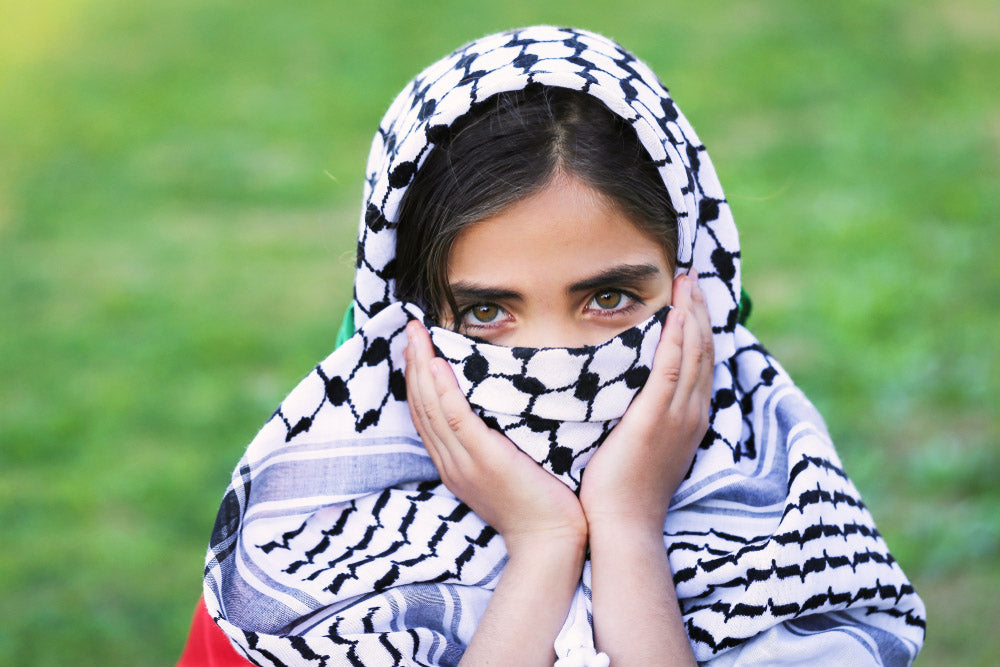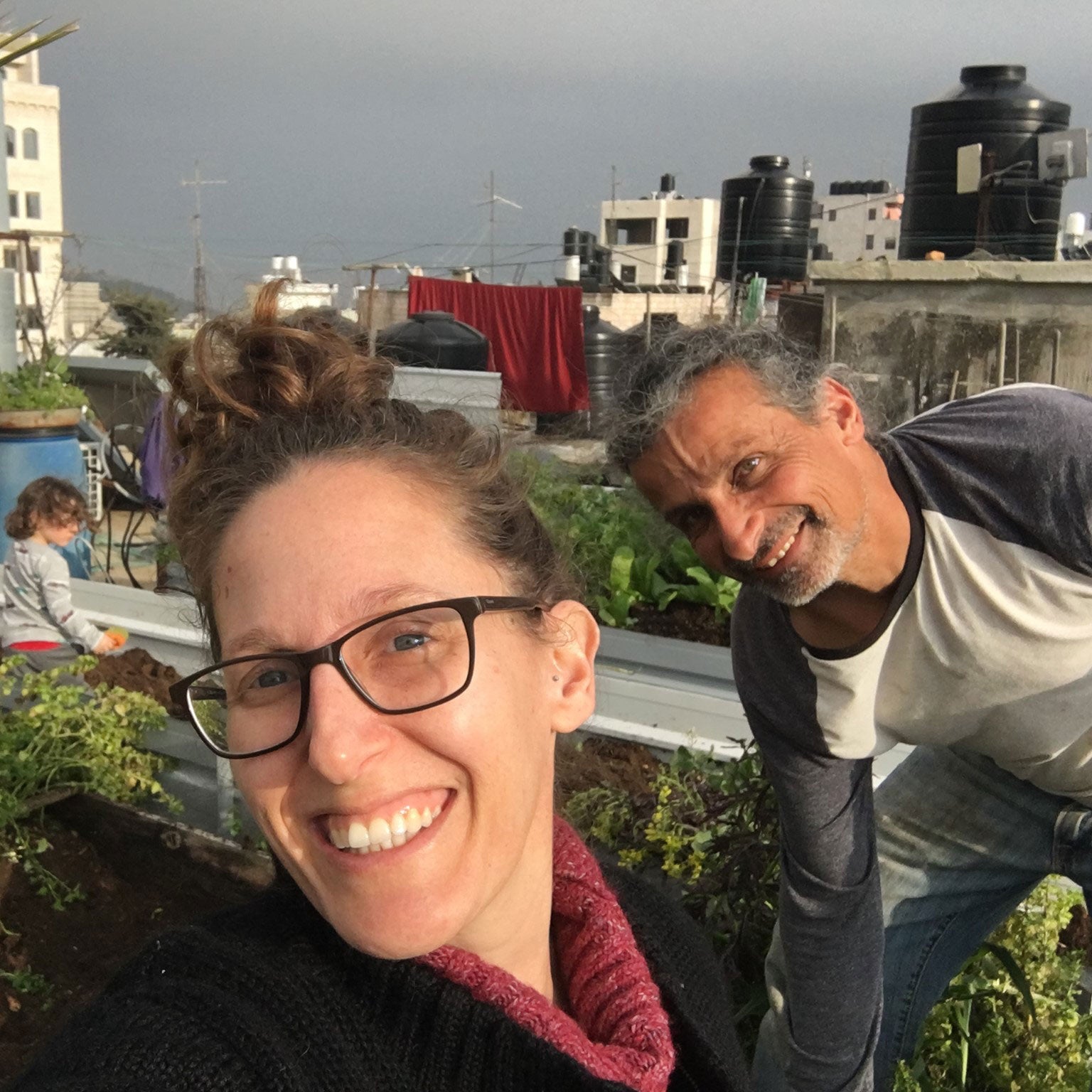
Is it okay for non-Arabs to wear the Arab scarf or keffiyeh? (3-minute read)
Contents of the blogpost
- Cultural appropriation or a form of solidarity
- Before Politics and culture think daily life
- All in all
- When is wearing a keffiyeh is considered cultural appropriation
We appreciate that many people ask this question! Because it means that its coming from a place of respect and not wanting to hurt anyone's feelings. That's why we are writing this small piece to clarify what we think and feel about it, we hope this gives you the answer you are looking for.
Cultural appropriation? Or a form of solidarity?
Many of our customers ask if it’s okay for non-Arabs to wear a keffiyeh. Or when wearing a keffiyeh is considered cultural appropriation?
I never personally thought about this. But actually, I appreciate it a lot when non-Arabs wear a keffiyeh, considering it a form of solidarity.
When is wearing a keffiyeh considered cultural appropriation?
In the instance of wearing a keffiyeh without knowing what it represents or what it stand for, that makes it culturally appropriated.
Hence, it’s important to know why you are wearing it, what does it refer to, and to acknowledge what you are supporting. Consider, for example, being asked by people on the street what is this shawl, what does it mean. How would you answer? It's like putting on the Palestinian identity, especially when wearing the traditional white and black or the red and white. Therefore, It’s essential to have some background information about Palestine, and the conflict.
Finally, at Handmade Palestine we are very aware that any crafts we sell do not become part of the cultural appropriation. After all we work to support the artisans making the crafts and tell their stories, by bringing their work to you and to all our friends and supporters around the world
Before Politics and culture think daily life
If we think about it in terms of geography, before we take on the political and historical aspect, people living in Mesopotamia were peasants, so they needed to put on a shawl on their heads to protect them from the sun in the summer and from the cold rain in winter.
In the gulf countries, people lived in the desert, before they moved to live in modern-day cities, so putting a scarf was used to hide their faces from the desert dirt and the hot sun. But they still do wear it until today, not only because the weather requires it, but also, by the time it became part of their culture.

All in all
We can conclude from these examples that, before the clothes or tools people used in their daily lives were considered part of their traditional culture, they were a living necessity.
In Palestine, until today villagers mostly, wear the Hatta and Igal, even if one doesn’t work as a peasant or on the farms. It just became part of the culture.
When the Palestinians revolted against the British mandate in 1936, they used the kuffiya to hide their faces, to stay anonymous. Later on, the keffiyeh became a cultural aspect representing Palestine, and a form of solidarity.
Read more about the history of the keffiyeh
GO TO KEFFIYEH COLLECTION







4 comments
Greetings from South Africa.
We have a saying that emanate from a speech that our icon Nelson Mandela made,
" our struggle is incomplete until the Palestinian people are free"
Thanks for the explanation on the meaning of the symbols, it is really appreciated and brings perspective.
A small suggestion: would it be possible to add a sticker, one that could easily be removed, or a label sewn onto the Keffiyeh that gives the explanation.
Or even a pamphlet that could be handed to everyone buying the Keffiyeh.
Warm regards from
South Africa
Hilton Van Niekerk
Hilton Van Niekerk
Thank you for educating me! I was always curious, and before trying a keffiyeh on I wanted to know what it was all about because I knew that it was somebody else’s culture with a deep history and as a non-Arab, I cannot just wear a cultural fabric without knowing what the culture was itself. I will wear the keffiyeh as a form of solidarity!
opium
Thanks for this article. I bought a keffiyeh from you and I love it. I wear it in solidarity with oppressed people everywhere, especially victims of Russian aggression in Ukraine (I was a university student when Russia invaded Afghanistan and many students wore keffiyehs in solidarity with the Mujahideen). It’s functional but it also makes a statement. I hope wearing one really helps the artisans who create them.
Bruce
Thank you for the info on the keffiyeh. I have a Palestinian student that I want to know that I support him and all Palestinians. I promise to wear one respectfully.
Renee
Leave a comment
This site is protected by hCaptcha and the hCaptcha Privacy Policy and Terms of Service apply.